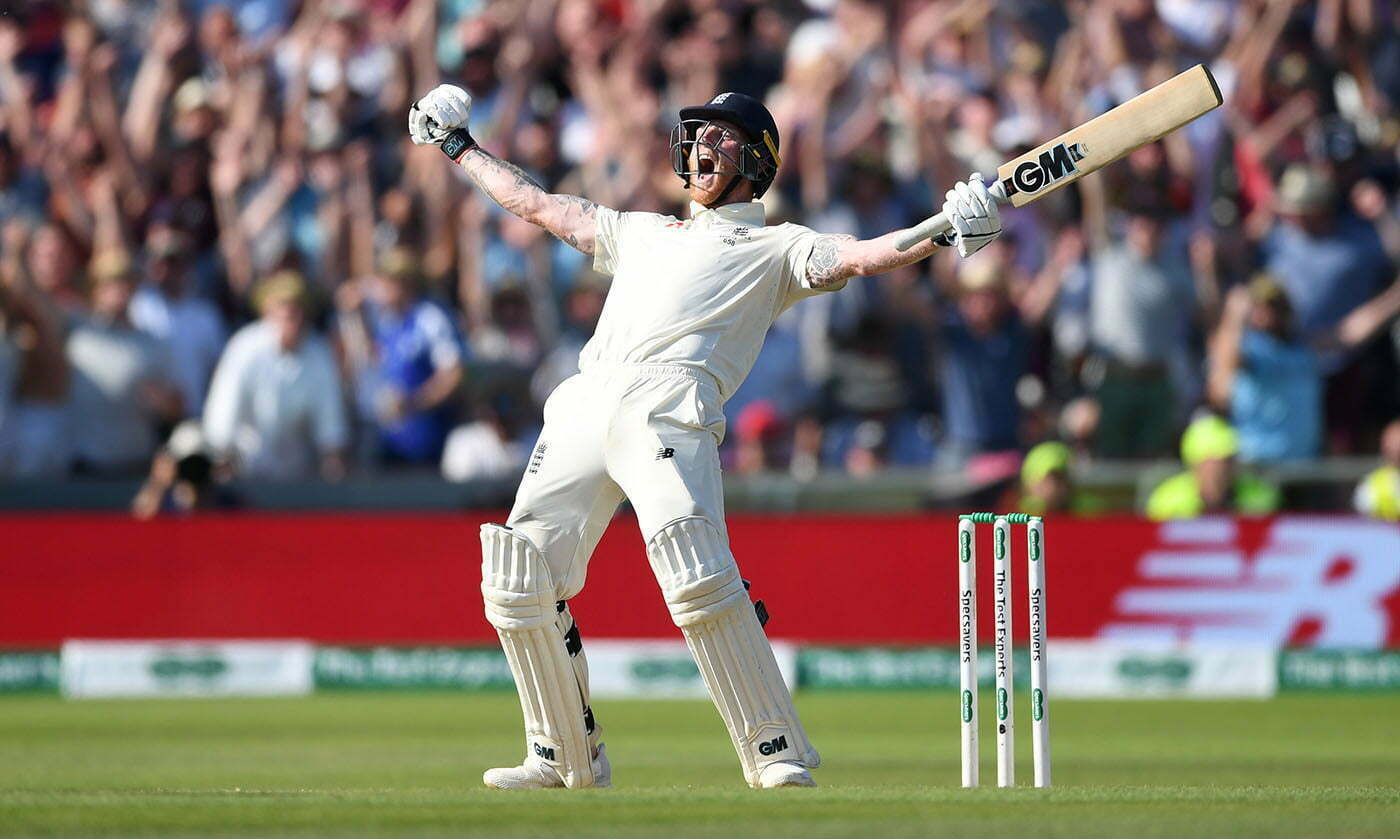Had this preview been written earlier, it would have been very different. The sudden and unexpected announcement that the England all-rounder Ben Stokes had been added to the squad of players that Joe Root will be leading to Australia for the upcoming Ashes series has given an entirely different perspective to the proceedings.
England rarely turn up in Australia as favourites. In 2013 Alastair Cook’s England beat the old enemy, led by Michael Clarke, 3-0 at home. There was a close, almost tantalising win at Trent Bridge, a massive one at Lord’s, and a Stuart Broad special at Chester-le-Street, and there were high-scoring draws at Old Trafford and The Oval.
Three months after the fifth Test the two sides were facing one another again in Brisbane. It hasn’t happened often that one Ashes series has followed another so precipitately. When it does, a certain momentum can take hold. After the 1920-21 series in Australia Warwick Armstrong’s and Johnny Douglas’ teams travelled over to England on the same ship. Having won the first series 5-0, Armstrong’s men won the first three of the second. Ian Chappell’s rugged Australians were too hot to handle in 1974-75; in the English summer of 1975, after the inaugural World Cup, they carried on where they had left off , though in fact the end result was only 1-0 to Australia.
Not surprisingly, Cook’s men arrived in Australia for the 2013-14 series in a mood of real optimism. But there was little sign of continuing momentum. “Rarely”, as George Dobell put it in Wisden, “can expectation have turned to dejection so quickly and so resoundingly.” Australia won 5-0. When Root’s team returned in 2017-18 (having won 3-2 at home in 2015) Australia won 4-0.
So England have not won a match in Australia since Andrew Strauss’ triumphant tour in 2010-11, and Australia won five home Ashes series in succession before that. Root’s tour of 2017-18 gradually became something of an ordeal; Australia won two matches by an innings and another by ten wickets.
England were definitely not favourites on that tour. There was one particular reason why they were never likely to be: the absence of Stokes. The all-rounder was under a cloud because of a well-publicised incident outside a Bristol nightclub at the end of the 2017 season. (He was charged with affray, and tried and acquitted in the summer of 2018.)
The absence of Stokes made a huge difference to the fortunes of that team of Root’s. Since then, of course, his star has risen even higher, largely because of his astonishing achievements in the summer of 2019, both during the World Cup and The Ashes. His anticipated absence from the forthcoming series, caused by a finger injury suffered during the Indian Premier League, and a break from the game for mental health reasons, seemed even more problematical, especially given that fast bowler Jofra Archer will definitely be missing. But now Stokes has been cleared to go by the medical team, and he is going.
It is impossible to exaggerate the significance of this development. Stokes is currently the best all-rounder in the world. Shakib-al-hasan and Ravindra Jadeja are his only challengers. And it is not just a matter of numbers; they are impressive enough. But that innings at Headingley – that is the sort of thing the impact of which doesn’t just last for a day, or a match or a series. It is always there. Think of Ian Botham. After Headingley ’81, he often seemed likely to dominate Australia. It was the same with Shane Warne after the Ball of the Century that dismissed Mike Gatting at Old Trafford in 1993. After that England batters were so often putty in his hands; think of the nightmare of Adelaide 2006-07, 13 years later.
That is what the Australians will be thinking about now. There is another, related point. Stokes makes things happen. How many times have we seen this when a game is drifting. With bat, ball or in the field, he can be irresistible. And Root, currently the world’s top-ranking Test batter, can , if not relax, at least believe he won’t have to do it all on his own.
Does this make England favourites? That may be going a bit too far. Australia have their own champion. In the 2017-18 series Steve Smith scored 687 runs at 137.40. In 2019, he scored 774 runs at 110.57. This is phenomenal. Only two men have scored more Ashes centuries than Smith’s eleven: Don Bradman and Jack Hobbs. That’s how good he is. If he has a series half as good as those last two series, Australia won’t lose, which means they will win.
Since then, relatively speaking at least, Smith has struggled. In the four home Tests against India in 2020-21 he averaged 44.71, and he was actually dropped by his franchise in the latest IPL season.
Still, the sight of England’s bowlers may be just the thing to get Smith going again. Australia will certainly hope so, as their batting is desperately dependent on him and his trusty protégé, Marnus Labuschagne. The normally audacious David Warner is in a long- standing rut of poor form. The rest of the batting is either untried or unreliable. Australia’s strong suit remains the bowling. Against India in 2020-21 the two leading bowlers on either side were Josh Hazlewood with 17 wickets at 19 runs apiece and Pat Cummins with 21 at 20.
The impact of the captaincy cannot be overlooked. Since time immemorial the Australian way has been to make the best player captain, with occasional exceptions. “Sandpapergate” made that impossible. Tim Paine did a sterling job in very challenging circumstances. But his time may have passed. He is not the best wicketkeeper in the countr, let alone the best captain. Players on both sides will recall his not insignificant contributions to England’s wins at Headingley and The Oval in 2019. And he has made some peculiarly gormless comments about the England players’ understandable concerns about visiting Australia.
Then there is the coach. I am sure Justin Langer is a thoroughly good bloke, but anyone who has watched The Test would have to wonder, how can you put up with him in the same room for two hours, let alone six weeks in an already stressful environment.
India were not favourites when they arrived in Australia in 2020-21, and they were bowled out for 36 in the first Test at Adelaide. But Australia lost the series 2-1, including their first loss in Brisbane since 1989-90, to what was by then virtually an Indian second eleven. Australia have not played a Test since. Does that mean England have a chance? Not necessarily. India are a much better side. That was made clear in the series in England recently concluded.
England’s batting does have potential. In the English summer, India’s openers, Rohit Sharma and K L Rahul, two of the best T20 players in the world, looked like an advertisement for the MCC Coaching Manual compared to England’s slightly contorted pair of Rory Burns and Dom Sibley. Sibley has gone for now. Burns does have a certain stickability. There is a real opportunity for the younger batsmen like Haseeb Hameed, Zac Crawley and Ollie Pope. Root and Stokes are world-class players, while Dawid Malan and Jonny Bairstow have both scored Test hundreds in Australia. Doing well in Australia, though requires special qualities. It can require exceptional courage, as demonstrated by Cheteshwar Pujara and Ajinkya Rahane in 2020-21. It can inspire astonishing flair, as demonstrated by Rrisharbh Pant in the same series; if only Jos Buttler could produce something like that.
In Australian conditions the bowling, for all the experience, lacks sufficient menace. The Australian and Indian combinations have more pace and hostility. England’s one outright fast bowler, Mark Wood, is highly unlikely to play in all five Tests. The spin bowling situation is more worrying still. English finger spinners have enjoyed considerable success in Australia – Fred Titmus, Derek Underwood, Graeme Swann. But neither Jack Leach nor Dom Bess seem to have reached quite that level.
But Stokes is back, so who knows what might happen? That is why we love sport, its glorious uncertainty. Australia are still favourites, but you can’t be sure – not now anyway.
Bill Ricquier





3 comments
Mike Davies
Excellent as always Bill. Just sorry I cannot go to Australia this time having been to matches in the last 3 Ashes series in Oz. Will be late night and early morning watching from UK instead! Hope all well Bill, All the best, Mike
Malcolm Merry
Doubt if one man, even an exceptional all-rounder, can make that much difference in Australia. The series will be won and lost by fast bowling and on that, as you say, Aus has the advantage.
(Actually, the 2021 England v India series has yet to be concluded, at least in the eyes of the respective Boards.)
Mark Allen
Excellent. Especially agree about Tim Paine.